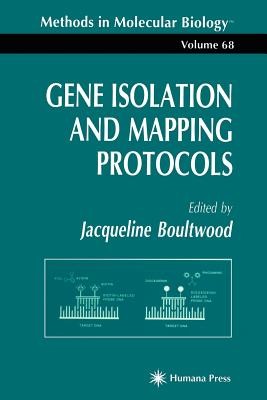
- We will send in 10–14 business days.
- Publisher: Humana
- ISBN-10: 0896033821
- ISBN-13: 9780896033825
- Format: 15.5 x 23 x 2.2 cm, softcover
- Language: English
- SAVE -10% with code: EXTRA
Gene Isolation and Mapping Protocols (e-book) (used book) | bookbook.eu
Reviews
Description
Over the past 10 years great progress has been made in the development of efficient techniques for both gene isolation and mapping. The identifica- tion and isolation of transcribed sequences from large chromosomal regions are central to the human genome mapping project. Techniques for isolating novel cDNAs have applications both in the overall construction and integra- tion of long-range physical and transcription maps and in the identification of disease genes. A number of different techniques for the isolation of cDNAs from mam- malian genomes have been developed, including screening "zoo" blots, the use of large genomic clones (YACs or cosmids) for hybridization against cDNA libraries, and CpG island mapping. More recently two highly efficient tech- niques have been introduced: exon trapping, based on the presence of exon splice sites, and direct selection, based on the enrichment of selected cDNAs using immobilized YACs or cosmids. Leading researchers in the field have contributed chapters detailing the practical procedures for these and other widely used methods. The most rapid progress presently being made in the field of gene isolation concerns the partial sequencing of cDNA clones from one or both ends to produce expressed sequence tags (ESTs). Indeed, by Octo- ber 1995, the EST division of Genbank (dbEST) contained a total of approxi- mately 270,000 human EST sequences accounting for almost half the number of sequence entries in Genbank.
EXTRA 10 % discount with code: EXTRA
The promotion ends in 20d.06:27:04
The discount code is valid when purchasing from 10 €. Discounts do not stack.
- Publisher: Humana
- ISBN-10: 0896033821
- ISBN-13: 9780896033825
- Format: 15.5 x 23 x 2.2 cm, softcover
- Language: English English
Over the past 10 years great progress has been made in the development of efficient techniques for both gene isolation and mapping. The identifica- tion and isolation of transcribed sequences from large chromosomal regions are central to the human genome mapping project. Techniques for isolating novel cDNAs have applications both in the overall construction and integra- tion of long-range physical and transcription maps and in the identification of disease genes. A number of different techniques for the isolation of cDNAs from mam- malian genomes have been developed, including screening "zoo" blots, the use of large genomic clones (YACs or cosmids) for hybridization against cDNA libraries, and CpG island mapping. More recently two highly efficient tech- niques have been introduced: exon trapping, based on the presence of exon splice sites, and direct selection, based on the enrichment of selected cDNAs using immobilized YACs or cosmids. Leading researchers in the field have contributed chapters detailing the practical procedures for these and other widely used methods. The most rapid progress presently being made in the field of gene isolation concerns the partial sequencing of cDNA clones from one or both ends to produce expressed sequence tags (ESTs). Indeed, by Octo- ber 1995, the EST division of Genbank (dbEST) contained a total of approxi- mately 270,000 human EST sequences accounting for almost half the number of sequence entries in Genbank.


Reviews